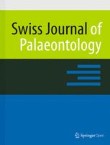2022 Citation Impact
3.0 - 2-year Impact Factor
1.6 - 5-year Impact Factor
0.913 - SNIP (Source Normalized Impact per Paper)
0.743 - SJR (SCImago Journal Rank)
2023 Speed
10 days submission to first editorial decision for all manuscripts (Median)
86 days submission to accept (Median)
2023 Usage
235,295 downloads
719 Altmetric mentions
